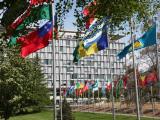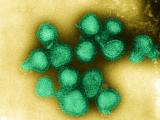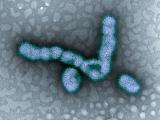Jun 11, 2010 (CIDRAP News) – In a bird's eye view of pandemic H1N1 seroprevalence studies published so far, the World Health Organization (WHO) said today the reports consistently show older people had partial protection and that infection rates were higher in younger people, but it's too soon to estimate a global attack rate.
The WHO based its report, which appears in today's issue of the Weekly Epidemiological Record (WER), on nine seroprevalence studies that include data from seven countries: China, Taiwan, Finland, Germany, Singapore, the United Kingdom, and the United States. The WHO noted that all but one study provided baseline estimates of cross-reactive antibodies to the pandemic virus.
Though two studies from Singapore found no or low proportions of people with pre-existing cross-reactive antibodies, studies from Finland, Germany, the United Kingdom, and the United States all found relatively high proportions of cross-protection in individuals older than 60 when compared to younger age groups.
However, all of the studies found that young children and young adults had the highest rates of seropositivity to the pandemic H1N1 virus after it arrived in communities.
A useful aspect of three of the studies is that they demonstrated that microneutralization and hemagglutination assays correlated well and produced similar results in serologic surveys, the report says. Microneutralization tests, which are sensitive and specific for detecting antibodies, are difficult for some laboratories, because they involve handling live viruses and require strict biosafety practices. Hemagglutination-inhibition assays are considered a surrogate test for virus neutralization, but the results depend on the type of red blood cells used.
The WHO experts said it's difficult to directly compare the nine seroprevalence studies, because they used different cut-off values and took place during different stages of the pandemic, among other reasons, but they show the same infection trends with older and younger groups.
Individually, the reports show different infectivity rates in different geographic areas during early out-of-season flu transmission, the article says. Also, the seroprevalence study from Taiwan showed that infection rates varied by virus exposure, with front-line healthcare workers having higher levels of pandemic H1N1 antibodies than hospital workers who had less exposure to sick patients.
Data from more studies are needed to assess a global attack rate, and standardized methods would be useful to help clarify if wide variations in seropositivity among studies reflect differences in study methods or in regional attack rates, the WHO said. The report adds that seroprevalence studies are being conducted in 24 countries, which should help provide a clearer picture of attack rates.
See also:
Jun 11 WHO Weekly Epidemiological Record report


















